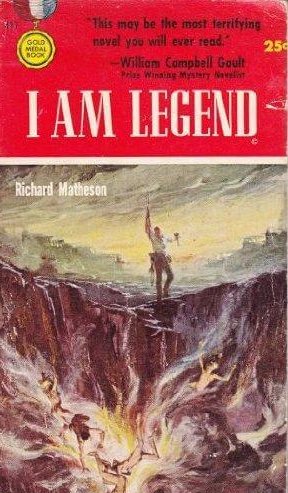

My solution to go around the problem- I got in a bit of trouble here-doesn’t take away from the fact that I think the books are far better than the films, even if I am a big fan of the LOTR trilogy on screen. The arguments around Peter Jackson’s Middle Earth adaptations, where there is both heat and light, shows a number of dividing lines. Some people, of course, never feel a film shows fidelity to the original author. I am both a book-lover and a film buff, so I am open to the idea that a film might be better than the book. Someone mentioned The Princess Bride to me lately, and I agree that the film has it hands down. It is rare that I hear a true book-lover say that the film was better than the book, but I’m sure we can find exceptions.

However, in this area, the book is stronger than the film–though the film really offers us more hope for our current moment. “It is not Good for Man to be Alone” is a good description of the main theme of I Am Legend in book and in adaptation.

But other perils have grown in our world, not least of which is the peril of isolation.
.jpg)
I have argued here that we should not be driven by fear or tempted by conspiracy theories in the face of COVID-19. Today, the mythic relevance of the film takes a new shape–a shape that I think helps restore one of the beauties of Richard Matheson’s original novella. In 2011, the conversation about I Am Legend and H1N1 was about the limits of human science. Like then, thoughts of plagues, death, and social breakdown bother our minds–and the fact that New York City is contagion ground zero in the film and one of today’s COVID-19 hotspots is not insignificant. I Am Legend took on a new significance in 2011 with the outbreak of H1N1 in 2011, fuelling conspiracy theories and providing teachers like me with great material for the classroom. I have decided to use Robert Neville from I Am Legend as the starting point. I am preaching tomorrow on the topic, “It is not Good for Man to be Alone” (Gen 2:18).


 0 kommentar(er)
0 kommentar(er)
